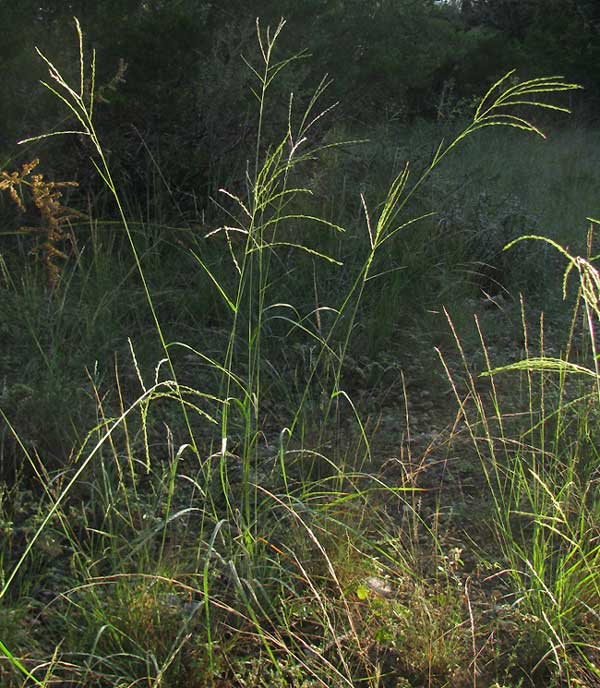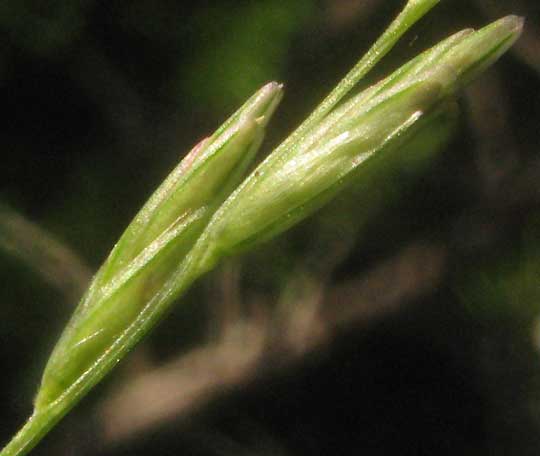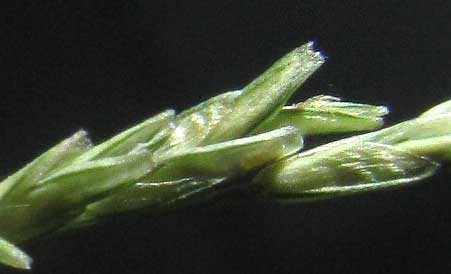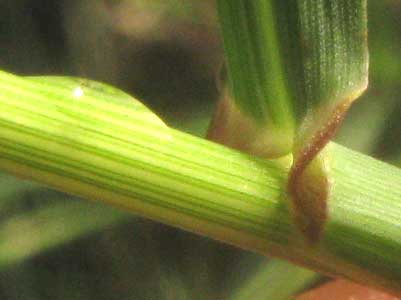Excerpts from Jim Conrad's
Naturalist Newsletter

from the October 13, 2013 Newsletter issued from the Frio Canyon Nature Education Center in the valley of the Dry Frio River in northern Uvalde County, southwestern Texas, on the southern border of the Edwards Plateau; elevation ~1750m (~5750 ft); N29.62°, W99.86°; USA
GREEN SPRANGLETOP
One of the most common and conspicuous grasses not only around Juniper house but also along roads, growing about waist high, is the one shown above. For a couple of weeks its immature flowers have been pushing up from leaf clusters, looking like narrow spikes. However, as the inflorescences rose it began unfolding side-arms that now are held at right angles to the stem axis. Below, you can see two spikelets:

There you see that each spikelet holds three or four florets. That's an important field mark because many grasses bear just one floret per spike, while others have dozens. A close-up of just one spikelet with its florets teased apart so that the lemma tips are visible is shown below:

Lemmas are the larger scales folding around the sexual parts of individual florets. Basic terms applying to grass flower anatomy are explained on our Grass Flower page at http://www.backyardnature.net/fl_grass.htm.
The above photo showing lemma tips displays a very important field mark for this species, which is that the tips are flat, even somewhat cleft in their centers. Lemma tips of the vast majority of grass species are sharply pointed, so such flat-tipped ones are just outrageous -- and helpful in the identification process.
Another field mark is the grass's ligules -- the ear-like appendages occurring where blades meet the stem. Many ligules are fence-like rows of stiff hairs, or cellophane-like barriers, or some other way, and many species don't have ligules at all. You can see this grass's modest ligules below:

Despite all these fine field marks, I had trouble keying out this abundant grass. Therefore this weekend I was glad when botanist Fred Wills visited from San Antonio, and I could just ask him what it was. "Green Sprangletop," he replied, which was a name I'd never heard of. "Sprangletop" sounds like a good Texas name, "sprangle" meaning "spread out in different directions," and our grass's inflorescence arms do that. Normally I look up the scientific name to get the common name, but this time I did the opposite. Several species known as sprangletops turned up with an image search, but only one image matched our grass. It was LEPTOCHLOA DUBIA*.
Green Sprangletop occupies dry, open plateaus and hills, alluvial areas, hammocks, and even disturbed areas throughout most of the Americas. It's a larval host the Sheep Skipper and Olive-clouded Skipper butterflies.
Ecologically, Green Sprangletop behaves as a pioneer species, so often it's used in seed mixtures so it can form a quick groundcover while other species have time to get established. However, the species is intolerant of poorly drained soils and high water tables.